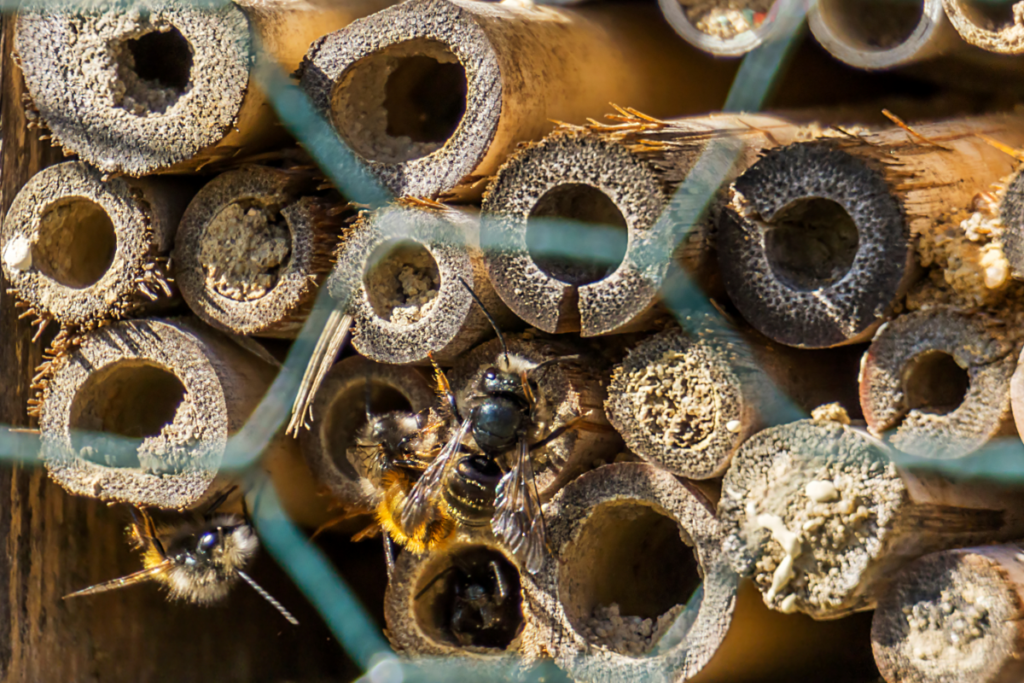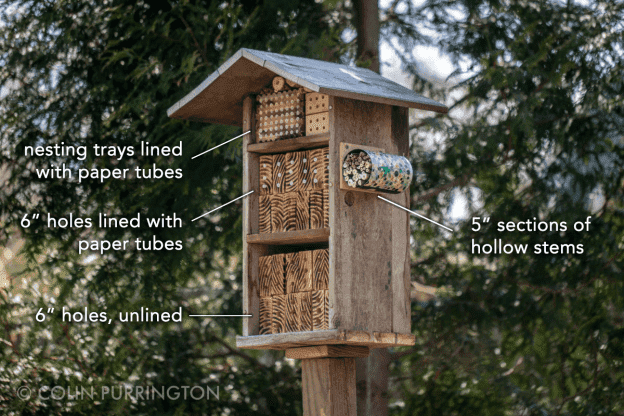Welcome back to the Lab!
We hope that you enjoy this week’s Notes from the Lab. Before we jump in… Missoula Gives, a 26-hour online giving campaign, starts at 5:00PM today! We’re working to reach a $25,000 fundraising goal with an incredible $52,000 in matching challenges in place. This more than triples the impact of your gift. We hope you’ll consider donating as well as sharing the campaign with others. Can’t wait? Our Missoula Gives website is now open for business.

Speaking of giving back, this seems like the perfect opportunity to talk about bee houses. As gardening enthusiasts around Missoula get ready for spring, many are wondering how they can support native pollinators. One unique (and adorable) way, is by building a bee house.
While keeping bee houses for solitary bees is much easier than a full beekeeping setup, it still requires some effort to keep your solitary bees healthy and parasite free. So here’s a handy guide with tips from the Xerces society and Colin Purrington, an entomologist and bee house enthusiast.
First and foremost, make sure your bee house is well-secured to whatever surface you attach it to. If the house is moving around in the wind or during inclement weather, the movement could knock the egg or larvae from their “pollen pillow.” Additionally, the bees have a hard time landing on moving objects.

Secondly, the house should be sheltered from the elements; you can attach an overhang to your bee home or simply hang it in a dry area with plenty of sun. On his website, Colin Purrington warns: “Moisture causes larvae to rot and also seems to cause kleptoparasitic pollen mites to flourish. If your house is fine except for the roof, get creative and attach one. Or stick it someplace that is under a pre-existing structure.”

When providing “tubes” or nesting cells for your bees, the material should be lightweight, breathable, and easy to remove and clean at the end of each bee season. Like us, bees respire, even when they’re in a pupal state. The water they exhale can build-up in a plastic or metal tubes and cause the pupae or pollen to rot.
When placing the nesting tubes, space them out adequately. In the wild, these bees would not be nesting within close proximity to each other, and tubes that are too close together can cause any diseases or parasites that are present to spread.
Most importantly, be sure to clean the bee house at the end of every season! The main goal of bee homes is to keep our native bees healthy and thriving, and without proper care, it can lead to unhealthy living conditions. It’s not quite as simple as hanging a bee house and simply walking away from it. Take care of your bees, and in return, they’ll take care of your garden.
For more info on building better bee homes, I highly recommend the following guides from both the Xerces Society and Colin Purrington:
- Nesting Resources (Xerces Society)
- Guide to building and managing a mason bee hotel
- The horrors of mass-produced bee houses (The title is a bit hyperbolic, but it’s a handy guide for what not to do)
Until next time, thanks for visiting the lab!
Bug Wrangler Brenna
brenna@missoulabutterflyhouse.org
Want to revisit a previous Notes from the Lab issue? Check out our archive! Do you want to request a subject for an upcoming issue? Email me at the address above and put “Notes from the Lab” in the subject line.